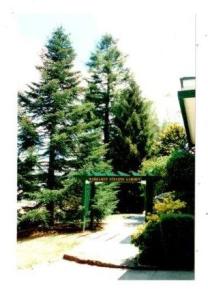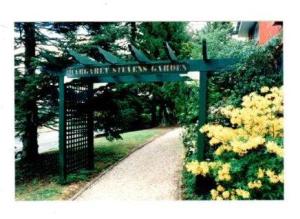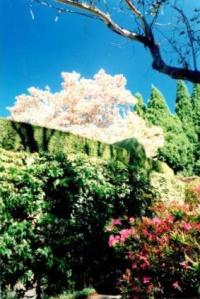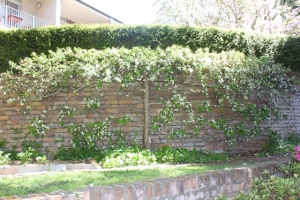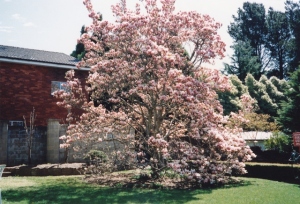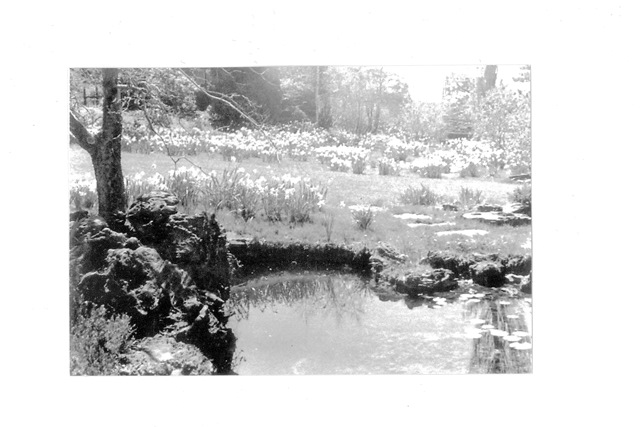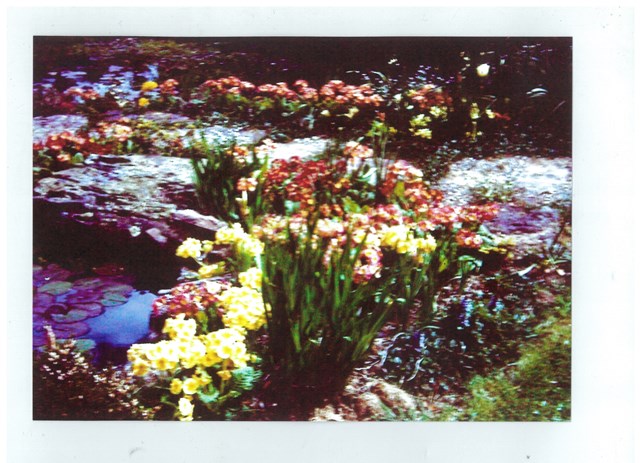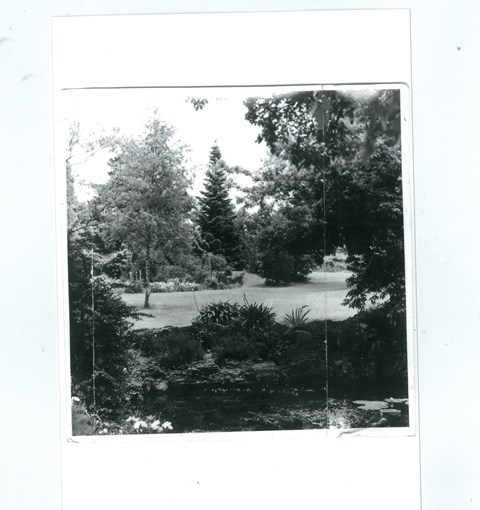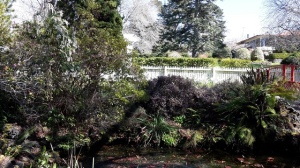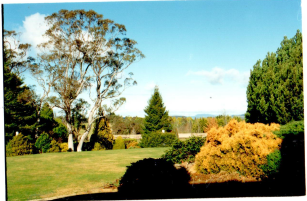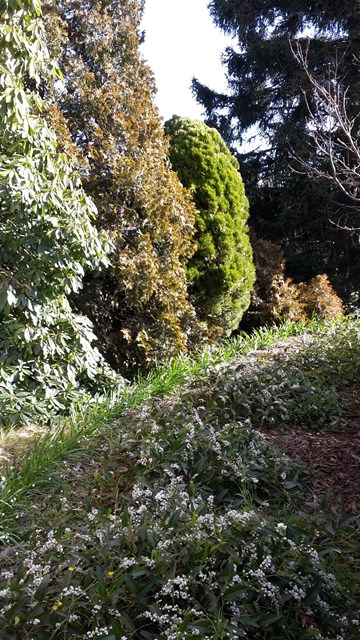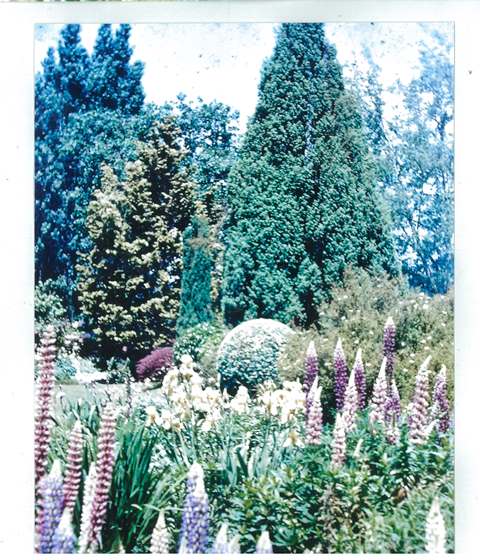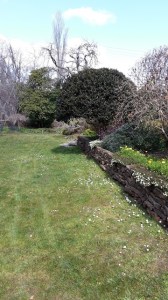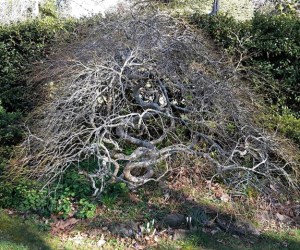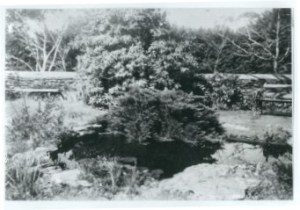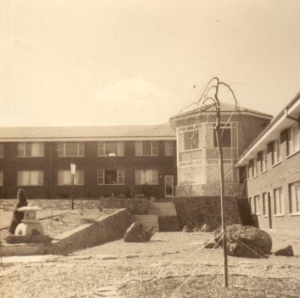Caroline Druce, the great niece of Bill Bewley, has moved in next door. Bill Bewley was a well-known nursery owner in the Blue Mountains skilled in grafting maples. Before beginning the maple grafting nursery at Warrimoo he and his family are remembered for the daffodils they grew and sold from what is now the TAFE site in Wentworth Falls.
Bill was born in Cowra in 1909. His interest in horticulture dates from around 1927 when the family was living in Luddenham and Bill was working in Hazelwood and Body’s Nursery in Pymble. By the time Bill had a family of his own he had moved to Fletcher Street in Wentworth Falls where he developed a nursery and landscaping business. His daughter Cathy Challiner remembers him doing some work at Everglades in Leura.
Bill was employed as a ranger by the Wentworth Falls Reserve Trust from 1933 to 1941. He excavated the circular drive, built tracks and viewing platforms and looked after a small refreshment shop. During this time Bill studied plant propagation and practices by borrowing books from the Mitchell Library in Sydney, the books being delivered by train.
In 1949 Bill purchased 32 acres of land where the Wentworth Falls TAFE now stands. He cared for the orchard of the neighbouring boys boarding hostel, now Blue Mountains Grammar School and grew daffodils for the Sydney markets. All his children helped pick daffodils before and after school.
In 1955 Bill moved his family to Epping, continuing to run a nursery on 5 acres at Castle Hill.
Caroline writes:
“In 1966 Bill decided to move back to the Blue Mountains and so he purchased 12 acres at Warrimoo and developed a nursery there. It was here in the early 1980s that he started to graft and develop Japanese maples and supply many plants to the mountains area including residential gardens in Leura. I remember running around the rows of plants in the nursery as a child when we visited in the late 1960s and returning again with young children for a family reunion in the 1990s. My Nanna, Bill’s older sister, aged 93 and one of her younger sisters were also present.
Bill developed the WJ Bewley Green Weeping Maple and the Bewley Upright Red Maple (Acer Palmatum) which continues to grow in the gardens of the mountains today. The green weeping maple is green with bronze tips in spring, green in summer and very red in autumn. The upright red maple is bronze red in spring, red in summer and orange red in autumn.
Bill developed the variegated Brush Box (Lophostemon confertus Bewley’s variegated) from a variation on a local mountain Brush Box. His daughter reports there to be one in Sydney’s Botanical gardens. Gt. uncle Bill also grafted Blue Spruce to Cedrus deodara which was popular then (1980s) as well.”
There are three grafted maples on the Waldorf site that I think are Bewley’s Upright Red. Two are in raised garden beds created when the car park was last renovated in the 1990s. The third is in the Fairfax garden. The photos above are of the maple in the Fairfax garden.
Thanks to Caroline Druce and Cathy Challiner for all the Bewley family history in this post.


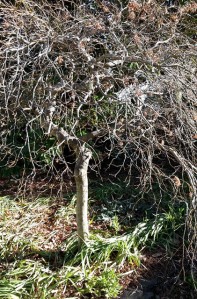
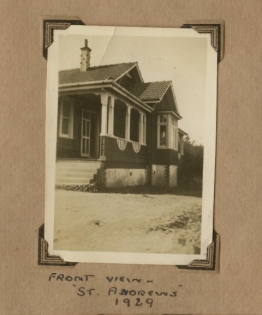
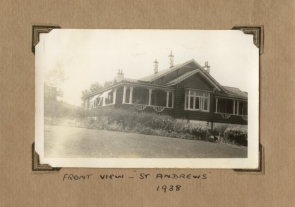

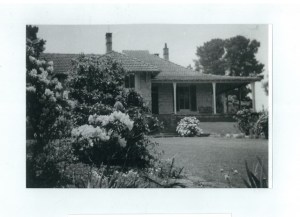
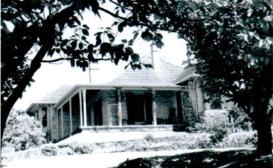
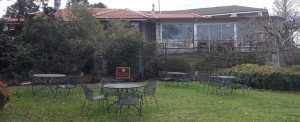
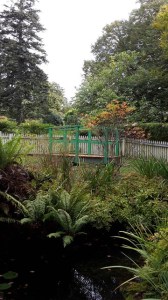
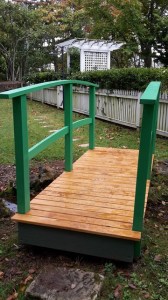
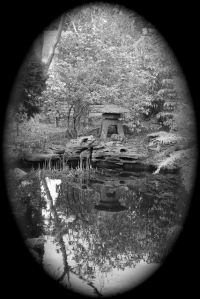
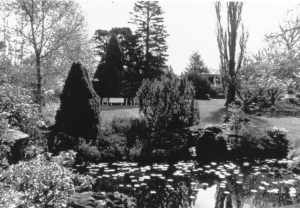
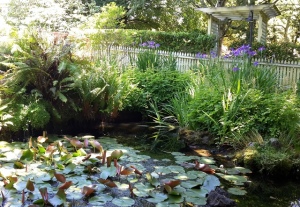

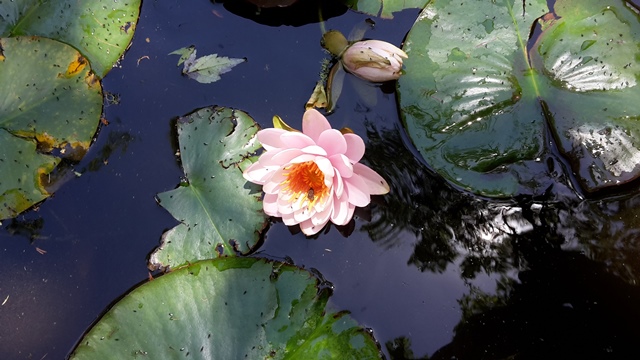 The Monet feel comes mostly from the water lilies planted by Hector Hood for Lady Fairfax, the Japanese iris that have been planted more recently and the whole linked by the lantern and bridge.
The Monet feel comes mostly from the water lilies planted by Hector Hood for Lady Fairfax, the Japanese iris that have been planted more recently and the whole linked by the lantern and bridge.